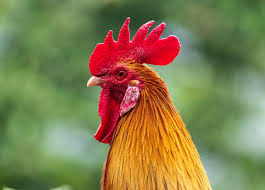Apramycin Premix
Name:
Apramycin Premix
Common Capacity:
- 100g/bag
- 500g/bag
- 1000g/bag (1kg/bag)
Common Concentration:
- 5%
- 10%
- 20%
Applicable Animals:
Apramycin is an aminoglycoside antibiotic primarily possessing strong antibacterial activity against Gram-negative bacteria, and also some effect on certain Gram-positive bacteria, especially sensitive to E. coli, Salmonella, and Shigella. It is mainly used for the treatment and prevention of bacterial intestinal infections in poultry and swine.
Applicable Animals in Global Animal Husbandry:
- Poultry (Chickens, Ducks, Turkeys): Primarily used for the treatment and prevention of intestinal infections caused by E. coli, Salmonella, etc., such as pullorum disease, typhoid, E. coli disease, fowl cholera.
- Pigs (Piglets): Primarily used for the treatment and prevention of yellow and white scour in piglets, post-weaning diarrhea, E. coli disease, salmonellosis, and other bacterial enteritis.
Usage and Dosage:
Apramycin premix is for oral administration by mixing with feed only. Dosage ranges may vary depending on the product concentration and local regulations.
Mixed with Feed: Mix the product thoroughly with feed before feeding.
- Poultry:
- For Treatment: For 10% concentration, add 500-1000g per 1000kg of feed (i.e., 50-100g Apramycin per ton of feed).
- For Prevention and Growth Promotion: For 10% concentration, add 100-300g per 1000kg of feed (i.e., 10-30g Apramycin per ton of feed).
- Pigs (Piglets):
- For Treatment: For 10% concentration, add 500-1000g per 1000kg of feed (i.e., 50-100g Apramycin per ton of feed).
- For Prevention and Growth Promotion: For 10% concentration, add 100-300g per 1000kg of feed (i.e., 10-30g Apramycin per ton of feed).
- Course of Treatment: Administer for 5-7 consecutive days, or as directed by a veterinarian.
Dosage by Growth Stage:
- Piglets/Young Poultry: During stressful stages such as early weaning or hatching, and periods prone to bacterial intestinal diseases, it can be added at preventive doses to help control diarrhea.
- Growing-Finishing Period: Primarily used to control intestinal health and prevent bacterial enteritis to promote growth.
Applicable Diseases and Symptoms:
Apramycin premix is primarily used for the treatment and prevention of intestinal infectious diseases caused by sensitive bacteria, especially E. coli and Salmonella, presenting as:
- Diarrhea: Yellow and white scour in piglets, post-weaning diarrhea, avian pullorum, fowl typhoid, paratyphoid, etc.
- Other Symptoms of Intestinal Inflammation: Depression, loss of appetite, abdominal pain, dehydration, wasting.
- E. coli Disease: Such as pericarditis and perihepatitis in poultry (as an auxiliary treatment).
Precautions:
- Ototoxicity and Nephrotoxicity: Apramycin is an aminoglycoside antibiotic. High doses, prolonged use, or use in animals with renal insufficiency may cause ototoxicity or nephrotoxicity. However, when administered orally as a premix, its absorption is limited, and the risk of toxicity is relatively low.
- Resistance: Prolonged or improper use may lead to the development of bacterial resistance. Use strictly according to veterinary instructions.
- Withdrawal Period: Strict adherence to the product’s specified withdrawal period is necessary to ensure drug residues in animal products (meat, eggs) comply with food safety standards.
- Homogenous Mixing: This product must be thoroughly mixed with feed to ensure accurate drug intake by animals.
- Effectiveness in Poultry and Piglets: Primarily effective against intestinal diseases in poultry and piglets. Efficacy may be poor in ruminants and adult pigs.
- Contradictory for Ruminants: Not recommended for ruminants, especially adult ruminants, as they may have lower sensitivity to aminoglycoside drugs and it may disrupt rumen flora.
- Storage: Store sealed in a cool, dry, well-ventilated place, away from direct sunlight.
Contraindications:
- Contraindicated in animals with a known hypersensitivity to aminoglycoside antibiotics.
- Contraindicated in animals with severe renal dysfunction.
- Not recommended for ruminants.
Post-Administration Care:
- Observe Animal Status: Closely monitor the animal’s feed and water intake, defecation, and mental state during and after medication to assess treatment efficacy.
- Supportive Therapy: For animals with severe diarrhea, supplement with electrolytes and vitamins to prevent dehydration and malnutrition.
- Environmental Hygiene: Enhance cleaning, disinfection, and ventilation of pens, reduce pathogen spread, and provide a comfortable recovery environment for animals.
- Feed Management: Adjust feed formulation, choose easily digestible feeds, and avoid moldy feed to reduce intestinal burden.
- Withdrawal Period Management: Strictly enforce the withdrawal period to ensure the safe market release of animal products.
Applicable Animals
Animal species suitable for this veterinary medication

